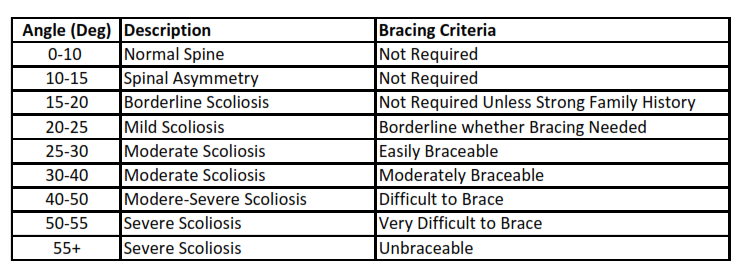Scoliosis Bracing By Curve Size

In addition to the different types/classifications, scoliosis varies by its size and treatment options differ according to the size of the curve. This is why it is important to know both the type/pattern of scoliosis AND the size of the curve in determining appropriate treatment.
What is the biggest curve that can be corrected with a brace? In my previous statement I specified that 55 degree curves were not braceable. In practice, it is not quite as simple as this. Some large curves are more correctable than others, hence some curves of 45 degrees are not braceable and some curves of 55 degrees are correctable. Generally speaking, if there is only one curve then 55 degrees should be the limit and if there are 2 large curves that are both structural then 45 degrees should be limit. Other factors including pattern of scoliosis, apex of the curves, age and flexibility also determine braceability. Take these images of Jahmie for instance with curves of 53 degrees thoracic and 43 degrees lumbar. Because she was very flexible, we braced her scoliosis and she had Schroth treatment and now her curves out of brace are stable at 40 degrees thoracic and 37 degrees lumbar and she has avoided having surgery.


